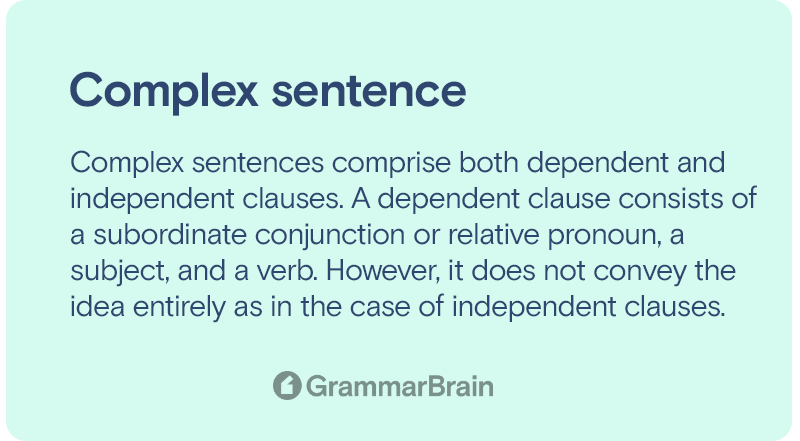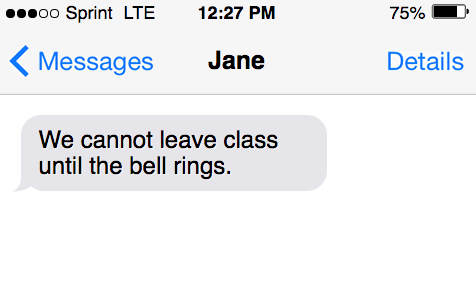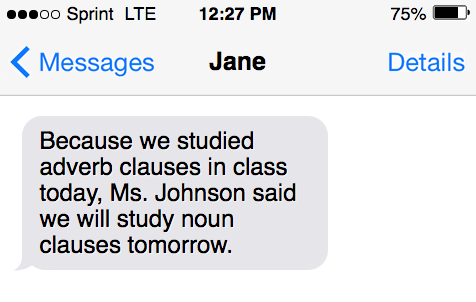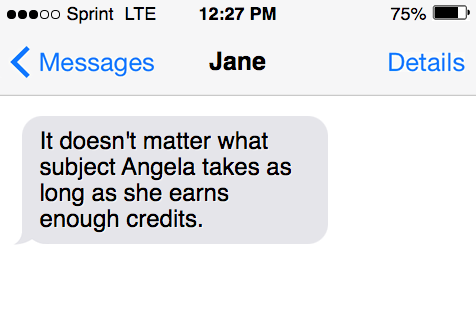

How does a person use a complex sentence correctly in their writing? As with any other type of sentence, there are certain rules for constructing a complex sentence. Keep reading to discover what elements a complex sentence contains, examples of complex sentences, and how these examples differ from other types of sentences.

A complex sentence is a sentence that contains an independent clause and at least one dependent clause.
Typically, these statements are used to include more information to modify or explain a sentence’s main idea.
To connect clauses, complex sentences often use a subordinate conjunction like “since” or “because.”
The most common type of complex sentences are conditional sentences, which use an “if-then sentence structure).

Therefore, if one clause is true, then the other must also be true.
Although they share similarities with compound sentences, complex sentences are a little different.
Additionally, complex statements are different from simple sentences.
The primary distinction complex sentences contain from other types of sentences is that they include a dependent clause.
Subordinating conjunctions are the words or phrases that connect a dependent clause to an independent clause.
Most often, subordinating conjunctions signal a cause and effect relationship or a shift in time and place between the two clauses.
Dependent clauses that begin with a subordinating conjunction are called subordinate clauses.
Again, subordinating clauses cannot be written as a complete statement on their own; they must have more information to form a complete thought.

It’s important to note that subordinating conjunctions are different from coordinating conjunctions.
These conjunctions are words that join two independent clauses of equal grammatical rank.
They can join two verbs, two nouns, two phrases, two independent clauses, or two adjectives.
To make it easier to remember, use the acronym FANBOYS.
As previously mentioned, complex sentences must contain at least one dependent clause.
Dependent clauses cannot act as a complete sentence on their own.
Rather, dependent clauses require an independent clause connected to them.
Still, a dependent clause always contains a subject and a verb.
The detail that makes a dependent clause different is that it typically begins with a subordinating conjunction.

“Because my dad asked for more soda…”
“If he were to study more often than one night a week…”
“Whenever Gertrude gets back…”
As you can see, these examples cannot stand alone as a sentence.
Rather, they express partial thoughts and require more information to form a complete sentence.
The difference between independent and dependent clauses is pretty simple.
Where dependent clauses express only part of a thought, an independent clause is a complete sentence on its own.
The way these two clauses are similar, however, is that both include a subject and a verb.
Still, independent clauses serve as a standalone sentence.

Dependent clauses are integral to independent clauses, especially when discussing complex sentences.
That said, the subordinating conjunction that a dependent clause begins with alters the meaning of an independent clause that previously stood alone.
A simple sentence is any sentence structure that only includes one independent clause.
Therefore, any sentence with more than one clause cannot be a simple sentence.
Simple sentences are some of the most basic clauses in the English language.
Still, although a simple statement typically doesn’t contain a lot of words, the clause can stand alone.
In writing, one can often combine two simple sentences to form a complex sentence that makes sense.
With that, one uses a subordinating or coordinating conjunction to combine the two.

The primary difference between simple and complex sentences is that the former only has one independent clause.
Complex sentences, on the other hand, have an independent clause as well as one or more dependent clauses.
“Tom got a headache because he played video games for six hours straight.”
In the previous statement, “because he played video games for six hours straight,” cannot stand alone.
The reader asks “why?” or “for what purpose?” due to the fact that “because” begins the statement.
The first clause, “Tom got a headache,” can stand alone and present a clear idea to the reader.
Many people struggle to write complex sentences because of the punctuation requirements.
Essentially, comma usage and comma splits can initially seem confusing.
Some complex sentences do not require a comma, while others do.
“After we successfully subscribed to Hulu, our house could watch The Handmaid’s Tale.”
“Harry left school early because he had a doctor’s appointment.”
Remember, the distinction between independent and dependent clauses is that a dependent one cannot be considered a complete thought.
By remembering the fact about complete sentences, knowing where to place commas is a lot easier.
Recall that complex sentences require an independent and dependent clause to follow English grammar rules.
That said, here are some complex sentence examples:
A compound sentence is a statement connecting two independent clauses.
Often, compound sentences use a coordinating conjunction like “and” or “but.”
These types of sentences are best when combining at least two independent clauses (that are related) into a single clause.
Therefore, the writing is more fast-paced when compound sentences are formed.
Take these two statements, for example; both make sense on their own.
“I am hungry. I want to eat lunch this afternoon.”
Using the word “and,” one can create a statement that meets the definition of a compound sentence.
“I am hungry, and I want to eat lunch this afternoon.”
A compound-complex sentence is a result of fusing one compound sentence with a complex sentence.
Although these are some of the more sophisticated structures in grammar, they are a great way to provide important information on a specific topic.
These sentences contain three clauses, which are the following:
Instead of using subordinating conjunctions to join the clauses, a coordinating one is typically used.
These sentences are utilized because they can provide more information than a typical compound or complex sentence is capable of.
That said, here are a few examples of compound-complex sentences:
“There were a lot of people at the concert, so I used my phone to call Abby, and was able to find her quickly.”
“The dog played alone in the yard, but nobody was watching him because he was well trained.”
“Since Kayla didn’t have sneakers, she refused to run the mile for gym class, but she still cheered on her peers.”
What is a complex sentence, and how does it differ from a compound one?
A compound statement connects one independent clause with another.
Therefore, there is no dependent clause in these examples.
Complex sentence examples have only one independent clause and at least one dependent clause.
Although the dependent clause would not make sense on its own, it still contains a verb and a subject.
Therefore, the combination of the dependent and independent clause ensures the complex sentence has meaning.
Complex sentences are frequently used in everyday speech. They prevent conversations from sounding terse and robotic. Consider the examples of complex sentences given below.
Complex sentences are created by combining the main clause with a subordinate or dependent clause. Complex sentences can be formed in one of three ways.
The two main issues authors face in creating complex sentences are using the appropriate subordinate conjunction and the right placement of commas. The need for a comma in a complex sentence is determined by two simple rules:
The first sentence has a subordinate clause in the beginning, so it needs a comma before the main clause. The second sentence does not need a comma since it begins with the main clause.
A sentence with just a single independent clause is called a simple sentence. Complex sentences can have more than one independent clause. Furthermore, complex sentences can be created from simple sentences. A complex sentence can be created from two simple sentences by joining them using subordinate conjunctions.
Examples:
Simple sentences:
Complex sentence:
A compound sentence needs at least two main clauses, whereas complex sentences require only one main clause.
Compound sentence:
Sam made the gingerbread cookies, and Sarah decorated them.
Inside this article

Fact checked:
Content is rigorously reviewed by a team of qualified and experienced fact checkers. Fact checkers review articles for factual accuracy, relevance, and timeliness. Learn more.

About the author
Dalia Y.: Dalia is an English Major and linguistics expert with an additional degree in Psychology. Dalia has featured articles on Forbes, Inc, Fast Company, Grammarly, and many more. She covers English, ESL, and all things grammar on GrammarBrain.